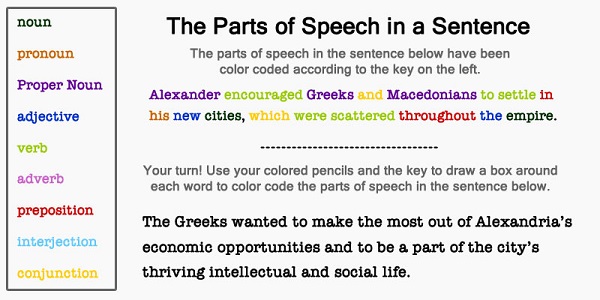- MN ABE Connect
- Archive
- Resources for Improving Student Writing
 May 22, 2017
May 22, 2017
Resources for Improving Student Writing
Stephanie Sommers, ABE InstructorIt’s always invigorating and inspiring to attend a national conference, like COABE, where the crowd is wholly devoted to sharing best practices related to teaching and learning. This year’s COABE Conference in Orlando, FL was no exception, and I returned home with a whole notebook full of ideas to try and share. One of the best sessions I attended was called Write More, Write Now, and it focused on building editing skills. The session was facilitated by Amber Miller from Austin Community College.
Editing vs. Revising with CUPS and ARMS
As a writing teacher, I have often struggled with the best way to provide feedback to my students about their writing. One of the things that I really appreciated about this session was that it differentiated between revising and editing a piece of writing, which is something that I do in my classes, but had never thought about in these exact terms.
 In my writing classes, I tell students that we need to focus on both sentence-level and paragraph or essay-level mistakes. Come to find out, this is also known as using the CUPS strategy to edit and the ARMS strategy to revise. CUPS stands for Capitalize, Usage and grammar, Punctuation, and Spelling, and ARMS stands for Add, Remove, Move and Substitute. These strategies were not developed by the session facilitator and there is a great deal of information about both available on the Internet, but they were new to me.
In my writing classes, I tell students that we need to focus on both sentence-level and paragraph or essay-level mistakes. Come to find out, this is also known as using the CUPS strategy to edit and the ARMS strategy to revise. CUPS stands for Capitalize, Usage and grammar, Punctuation, and Spelling, and ARMS stands for Add, Remove, Move and Substitute. These strategies were not developed by the session facilitator and there is a great deal of information about both available on the Internet, but they were new to me.
The idea is that writers use the ARMS strategy to make sure their writing is well organized, descriptive, and cohesive, and the CUPS strategy to make sure that they are adhering to the conventions of Standard English. She also introduced an Editing Wheel as a creative alternative to simple editing checklists. They are used in much the same way, but students have to assemble them and then turn them when checking their work, which adds and interactive element.
Color-Coded Grammar
Another useful resource that Amber shared was the idea of color-coded grammar. This is also not an original idea, and there seem to be many variations on this strategy available online. The basic idea is that you designate the different parts of speech as different colors. For example, you might teach your students to underline nouns in red and verbs in blue. If students do this with colored pencils before beginning to do other editing, it can really help with recognizing errors involving subject-verb agreement and pronoun reference (among others).

Everyday Edits
Finally, Amber shared a great resource for daily editing practice that is free and available online. It’s called Everyday Edits from the Education World website. There are literally enough activities here for you to use a different one every day of the year and then some. They are divided by month, and some of the activities are thematic, like the Cinco de Mayo, Memorial Day, and Mother’s Day activities from the May list. These are short paragraphs that contain mistakes. They can be printed or projected for classroom use. An answer key is available for each paragraph, making these the perfect ready-to-use activity for busy teachers.

Newsletter Signup
Get MN ABE Connect—the official source for ABE events, activities, and resources!
Sign UpArticle Categories
- ABE Foundations/Staff Onboarding
- ACES/Transitions
- Adult Career Pathways
- Assessment
- CCR Standards
- Citizenship
- COVID-19
- Cultural Competency
- Digital Literacy/Northstar
- Disabilities
- Distance Learning/Education
- ELA
- Equity/Inclusion
- ESL
- HSE/Adult Diploma
- Listening
- Math/Numeracy
- Mental Health
- Minnesota ABE
- One-Room Schoolhouse/Multilevel
- Professional Development
- Program Management
- Reading
- Remote Instruction
- Science
- Social Studies
- Speaking/Conversation
- Support Services
- Teaching Strategies
- Technology
- Uncategorized
- Volunteers/Tutors
- Writing